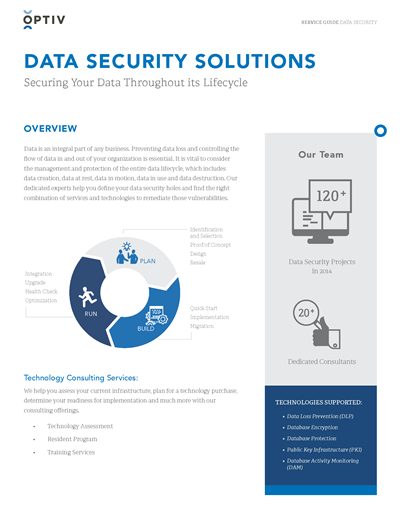Exploring the Importance of Information Damage in the Context of Computer System Security Solutions and Protecting Confidential Information
In an era where data violations are significantly typical, the importance of effective data devastation can not be overemphasized. When no longer necessary, Organizations has to embrace rigid steps to ensure that sensitive info is not just shielded throughout its lifecycle however likewise decisively eliminated. The approaches employed for information eradication, coupled with compliance to legal criteria, play an essential role in maintaining privacy and trust fund. The effects of these methods prolong beyond simple conformity, affecting a firm's online reputation and functional honesty in the digital market. What techniques can companies apply to enhance their information damage protocols?
Recognizing Information Destruction
Data destruction is a vital element of computer system protection that includes the irreversible removal of data from storage space tools to prevent unauthorized gain access to and prospective information breaches. In an increasingly electronic landscape, organizations encounter increased dangers associated with delicate information being incorrectly accessed or exploited. Efficient information destruction safeguards against these dangers, making certain that personal dataâEUR" such as client information, intellectual residential property, and economic recordsâEUR" can not be recovered after disposal.
Comprehending the value of data destruction extends beyond mere compliance with legal and regulative structures; it is crucial for keeping business honesty and depend on. When data is improperly handled or inadequately destroyed, the consequences can be extreme, consisting of economic loss, reputational damage, and legal responsibilities.

Techniques of Information Elimination

One common technique is data wiping, which entails overwriting existing information with arbitrary patterns several times. This method makes the initial information irretrievable, making it a prominent choice for organizations seeking to secure private info.
An additional method is degaussing, which utilizes a powerful magnetic field to disrupt the magnetic domains on storage gadgets, effectively eliminating the data. This approach is particularly reliable for magnetic media however is not appropriate to solid-state drives.
Physical devastation is one more durable method, involving the shredding or crushing of storage devices. This method guarantees that data recovery is virtually impossible, making it ideal for highly sensitive information.
Finally, encryption can function as a complementary strategy to information eradication. By encrypting data prior to deletion, companies can include an additional layer of safety, making certain that even if remnants are recuperated, they stay hard to reach without the decryption key. Each method ought to be picked based upon the degree of data level of sensitivity and the certain safety and security demands of the organization.
Legal Conformity and Data Safety
Organizations have to browse a complex landscape of legal requirements associated with information security, especially after implementing methods of data removal. Different policies, such as the General Information Security Regulation (GDPR) and the Medical Insurance Portability and Accountability Act (HIPAA), impose rigorous standards on just how companies must get rid of and manage of delicate information. Failure to abide by these laws can cause significant legal consequences, including substantial penalties and reputational damage.
Data damage processes have to be thoroughly recorded to demonstrate compliance with applicable regulations and standards. This documents not just works as proof of adherence to legal obligations but additionally highlights a commitment to guarding delicate information. Organizations should also develop clear policies regarding information retention and destruction timelines, guaranteeing that data is not held longer than necessary.

Additionally, regular audits and analyses of data destruction techniques are necessary to maintain compliance and adapt to evolving legal frameworks (data destruction). By proactively dealing with legal requirements, organizations can alleviate threats associated with information violations and show their dedication to data safety and security. Ultimately, prioritizing legal conformity in information devastation processes is not simply a governing responsibility, however a basic facet of a durable data safety and security method
Influence On Business Credibility
The credibility of a business can be dramatically influenced by its strategy to information devastation and monitoring. In today's digital landscape, where information breaches can occur at any kind of moment, the failing to appropriately get rid of delicate information can bring about extreme repercussions. Organizations that improperly manage data devastation risk exposing private customer details, which not just goes against personal privacy legislations however likewise erodes trust fund among customers and stakeholders.
A damaged reputation can lead to reduced client commitment, as clients come to be reluctant to engage with a business that has actually demonstrated read this carelessness in safeguarding their information. Furthermore, negative promotion bordering a data breach can have a long lasting effect, as possible customers might be hindered by the perceived absence of security. This can result in a direct decrease in profits and market share.
Moreover, organizations that prioritize information devastation as part of their security technique can improve their online reputation by showcasing their commitment to securing delicate information. By embracing rigorous data management methods, organizations can not only reduce risks however additionally position themselves as trustworthy entities in their corresponding markets, consequently strengthening their total brand name picture.
Ideal Practices for Secure Disposal
Executing best techniques for protected disposal of data is crucial for alleviating threats associated with information breaches and making sure compliance with personal privacy guidelines. Organizations should take on a detailed data disposal policy that lays out treatments for both electronic and physical data damage.
For physical information storage space devices, such as hard disk drives, shredding or degaussing is recommended to stop information healing. Furthermore, companies need to preserve a chain of protection documentation throughout the disposal procedure, making sure accountability and traceability of disposed things.
For electronic information, making use of software application that sticks to market standards for data cleaning is critical. This software must overwrite existing information numerous times, making recuperation practically difficult. It is likewise essential to confirm the effectiveness of the information destruction process with audits or third-party assessments.
Training staff members on secure disposal practices adds an additional layer of protection, as human error can frequently lead to information direct exposure. Routinely upgrading and examining disposal plans ensures positioning with developing guidelines and technological improvements. By implementing these best practices, organizations can considerably minimize the threat of unapproved data gain access to and improve their overall information security strategy.
Verdict
To conclude, information damage is a basic aspect of computer security solutions that ensures the security of secret information from unauthorized gain access to. Implementing efficient techniques of data elimination, sticking to legal conformity, and recognizing the effect on service credibility are necessary components of a comprehensive information safety and security technique. By taking on finest techniques for safe and secure disposal, companies can cultivate count on with customers and protect delicate data, eventually adding to a more protected electronic landscape.
In an era where data violations are progressively typical, the value of effective data damage can not be overemphasized.Data destruction is a vital part of computer safety and security that entails the irreversible elimination of information from storage space devices check to prevent unapproved gain access to and potential information breaches. Organizations ought to likewise establish clear plans regarding data retention and devastation timelines, ensuring that information is not held longer than necessary.
By proactively addressing legal requirements, organizations can mitigate dangers connected with information breaches and show their dedication to information safety and security (data destruction). Eventually, focusing on lawful compliance in information destruction processes is not more information just a regulative responsibility, yet an essential facet of a durable information protection method